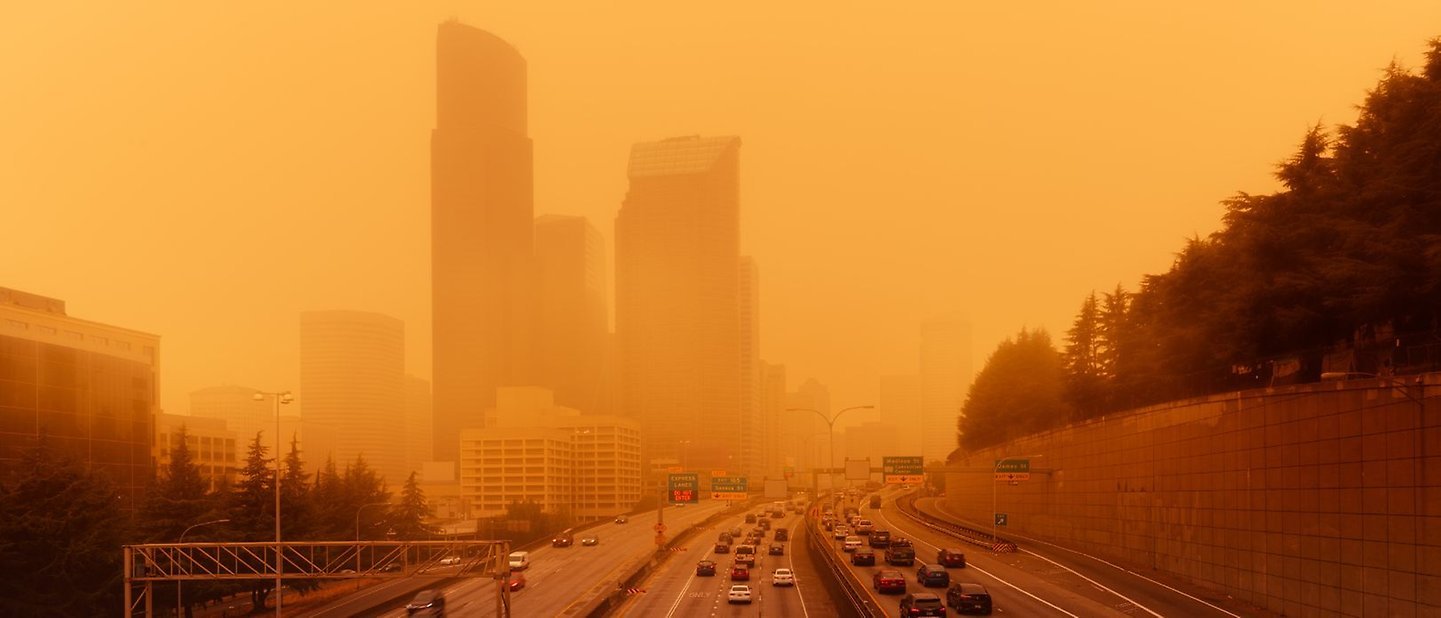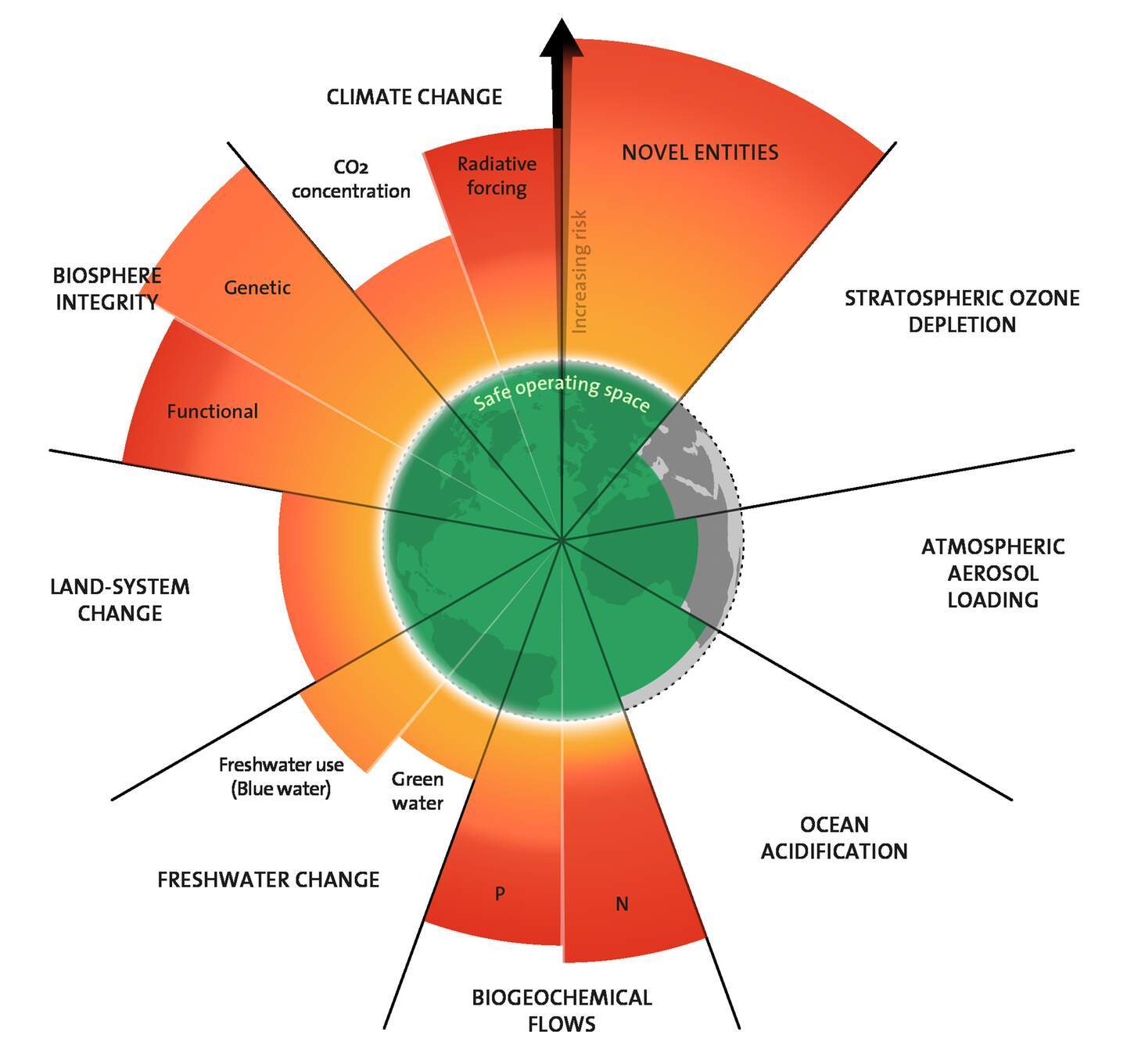Stockholm Resilience Center maps all nine planetary boundaries with six crossed

A team of scientists from around the world has developed a comprehensive framework for assessing planetary resilience. This groundbreaking research identifies nine key processes that impact humanity's ability to thrive safely within our planet's boundaries. Unfortunately, the team's findings show that six of these processes are currently being exceeded, and pressure on all nine is growing. The areas of concern include global warming, the biosphere, deforestation, pollutants, plastic, nitrogen cycles, and freshwater.
“This update on planetary boundaries clearly depicts a patient that is unwell, as pressure on the planet increases and vital boundaries are being breached. We don’t know how long we can keep transgressing these key boundaries before combined pressures lead to irreversible change and harm,” says Stockholm Resilience Center researcher Johan Rockström.
The planetary boundaries framework, which was first introduced in 2009, has been assessed for the third time in a new study. This study is the first to conduct a complete check-up of all nine processes and systems that are responsible for maintaining the stability and resilience of our planet. While the transgression of a boundary does not necessarily result in immediate drastic changes, it indicates a critical threshold of increasing risks to both people and the ecosystems that we are a part of. 
New scientific evidence allows the team to quantify atmospheric aerosol loading. While the boundary is not yet transgressed, rising pressures are evident in regions where air particle pollution impacts monsoon systems.
The assessment confirms that the novel entity boundary, which includes all human-made chemical compounds like microplastics, pesticides, and nuclear waste, has been breached.
The freshwater boundary now considers both green water (held in soil and plants) and blue water (in rivers, lakes, etc.) - both are transgressed.
It is worth noting that a novel method for evaluating biosphere integrity in real-time has been developed. This approach has uncovered signs of compromised ecosystem functionality, indicating that the limit was crossed as early as the late 1800s, when global agriculture and forestry experienced their initial significant expansions.
It is important to comprehend the Earth's climate and ecosystems as a whole system.
In light of these new outcomes, the researchers emphasize that Earth's resilience goes well beyond climate change.
"The planetary boundaries framework helps scientists to track and communicate how these rising pressures are destabilizing our planet. Earth is a living planet, so the consequences are impossible to predict. That is why we are working more and more with policymakers, businesses, and wider society to try to mitigate pressures on all boundaries,” stresses co-author Sarah Cornell of the Stockholm Resilience Centre at Stockholm University.
The boundary for ozone depletion was exceeded in the 1990s but – thanks to global initiatives, catalyzed by the Montreal Protocol, this boundary is no longer transgressed.
The application of advanced supercomputer models and simulations has proven instrumental in analyzing Earth's ecosystem. Such models facilitate the exploration of the interplay between climate and biosphere interactions. These simulations are conducted over an extended period of several centuries, taking into account both immediate and gradual Earth system processes that culminate in the eventual outcomes of environmental changes triggered today.
"Science and the world at large are really concerned over all the extreme climate events hitting societies across the planet as we move through the third human-amplified El Niño in only 25 years. But what worries us, even more, is the rising signs of dwindling planetary resilience, manifested by the breaching of planetary boundaries, which brings us closer to tipping points, and closes the window to having any chance of holding the 1.5°C planetary climate boundary," Johan Rockström says.
The planetary boundaries assessment highlights the intricate links between humans and the environment. It provides a framework for systematic efforts to protect, restore, and enhance the Earth's resilience.
“Ultimately, it highlights the environmental consequences of living in the Anthropocene, and our responsibility as future stewards for the planet,” concludes co-author Ingo Fetzer of the Stockholm Resilience Centre at Stockholm University.
The research findings provide a clear reminder of the detrimental impact of human activity on our planet. As of now, six out of the nine planetary boundaries have been breached. If we don't take prompt action to reverse this trend, the resulting consequences could be catastrophic. We must act immediately to safeguard our planet and secure its future well-being.

 How to resolve AdBlock issue?
How to resolve AdBlock issue?